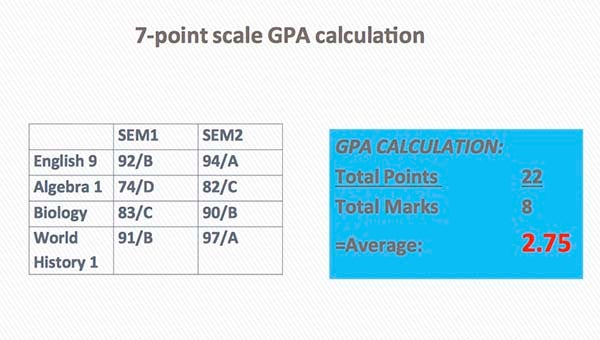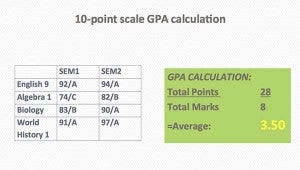Franklin wants to ‘level playing field’ in college admissions
Published 2:31 pm Saturday, March 21, 2015

A comparison between the seven-point and 10-point grading scales and the impact it can have on a student’s grade point average.
FRANKLIN
Starting next school year, Franklin City Public School students will move from a seven- to a 10-point grading scale.
“Our students are at a disadvantage and not on the ‘same playing field’ in the college admissions process since surrounding divisions and states have already adopted a 10-point grading scale,” said Superintendent Dr. Willie J. Bell. “There is support from parents, students, school faculties and administration who believe this move will make students more competitive in the college application process…
“At the time of the research, 89 percent of colleges compare applicants to all other students in the applicant pool — no differentiation of grading scales.”
Further, Bell said 55 percent of colleges do not recalculate a student’s grade point average from a seven-point scale to a 10-point scale, even though the college board defaults a 10-point grading scale for the state’s higher education students.
“Our students may be less competitive in competing for merit-based scholarships and college honor programs because most applicants are on a 10-point grading scale versus a seven-point grading scale,” he said.
Suffolk, Isle of Wight, Sussex and Surry schools use a 10-point scale. In Hampton Roads, Hampton, Virginia Beach, Chesapeake, Norfolk, Newport News, Poquoson and Portsmouth also are on that scale. North Carolina, Georgia, Florida and New York also use a 10-point standard state-wide.
In Region II alone, Franklin students were competing against 254,470 children on the larger grading scale.
Bell said it made a difference. Doing the math, a ninth-grader gets his report card at the end of the year. In the first semester, he made a 92 in English 9, and he pulled that up to a 94 in the second. World History 1 was also a good subject, and he made a 91 in the first semester and a 97 in the second. He did average in biology, making an 83 in the first semester but pulling it up to a 90 in semester two. Algebra 1 didn’t go as well, and he made a 74 in semester 1 and an 82 in semester 2.
On a seven-point scale, that student ends the year with a 2.75 grade point average. Only the 94 and 97 were As, while the 74 is a D.
On a 10-point scale, however, a student with the same marks makes a 3.5 GPA. That 74 is a C, and the grades in the low 90s are As instead of Bs.
Besides college admissions, Bell also said this change will improve the graduation rate, and by accord, decease the dropout rate.
More students will also have the opportunity to be on the honor roll, complete advanced courses and achieve advanced diplomas.
The change will impact second- through 12th-graders. Kindergartners and first-graders are on a letter system, with E being excellent progress, S being satisfactory progress, N being needs improvement and U being unsatisfactory.
Southampton County Public Schools are one of the local divisions still on a seven-point grading scale.
Some Hampton Roads districts, including Chesapeake, Norfolk, Portsmouth, Suffolk and Virginia Beach, also advise teachers to refrain from assigning zeros to students. According to the Virginia Beach Public School systems grading policy, “schools should adopt grading procedures that minimize the impact of a zero on a student’s nine-week grade.”






